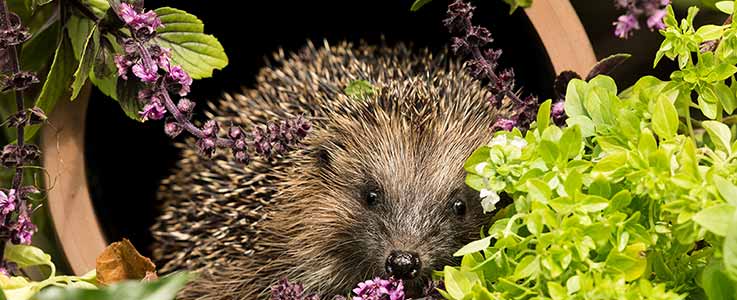
With the ever increasing pressures on our environment it is becoming even more important that we all do a little bit to help. Nature’s chain is a delicate balance and one that we can all have an impact on.
Many people will look at their own garden and wonder how their little plot could possibly make a difference. If every garden in a street did something to benefit our wildlife, this would soon amount to a much larger result.
Here are a few ideas that are easily achieved, ideal for smaller gardens but that will help secure the future of our environment for generations to come.
Log stacks:
These do not need to be huge. A small collection of branches piled up behind shrubs will create the perfect home for many of our native insects. It will provide protection from the heat of the summer sun and also the bitter cold of winter.
Water dish:
Something as simple as a plant saucer filled with water can provide an essential watering hole for birds, hedgehogs and badgers. If a few small stones are placed in it then bees will also have a safe place to drink from too.
Planting for pollinators:
There are many plants that are ideal for supplying vital food for our pollinators. One of the easiest to grow is English lavender. Varieties like Hidcote or Munstead can be grown in containers in a sunny site and produce a mass of flowers through May into June.
Nettles:
The thought of growing nettles in the garden may seem a little crazy. However, they are the staple food source for the Peacock butterfly larvae. Our native Peacock butterfly numbers have radically dwindled over the last 20 years or so. This is largely due to over-development and our perfectly manicured gardens. If we all allowed a small clump of nettles to grow in our garden, the whole-scale effect could help rebuild the numbers of one of the most beautiful species of butterfly. Nettles are also an amazing source of nitrogen, which is what plants use to grow leaves. At the end of the season, cut them down and add them to your compost heap.
Broken pots:
A half broken terracotta pot creates a great habitat when placed face down on the soil. Place between shrubs or at the back of a border a loosely fill the recess will leaves. This will create a safe retreat for frogs. Remember you don’t have to have a pond to have frogs!




